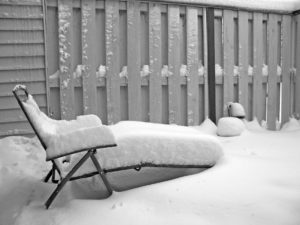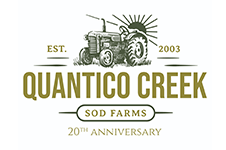
Fall is drawing to a close, and winter will be here soon enough. That’s one of the many reasons why cool-season sod and grasses can be better for your landscape than you probably thought before.
Choosing between the types of sod and grass you need for your lawn is always a tough choice. However, with another change in seasons almost in full swing, you’ll have to take action as soon as possible. Fall is drawing to a close, and winter will be here soon enough. That’s one of the many reasons why cool-season sod and grasses can be better for your landscape than you probably thought before.
Kentucky Bluegrass
We begin with a discussion of Kentucky bluegrass. This species of sod is incredibly versatile. As such, it is one of the most popular varieties of grass used all across the country. You may have heard of it being referred to as “the king of lawn grasses” primarily because it can thrive when others falter. The bluegrass flourishes because it can use underground stems called rhizomes; they spread out from the parent plant and can then form a new plant. Some examples of where Kentucky bluegrass is used is as cover for:
- Athletic fields
- Residential lawns
- Golf courses
Perennial Ryegrass
Perennial ryegrass, on the other hand, is somewhat different from its blue counterpart. It grows in bunches instead of spreading out; likewise, it can germinate and take root more quickly. Once it sprouts, it will look dark green and features a medium-fine texture. It’s surprisingly easy to mow and you can choose to seed it on its own or combine it with other types of cool-season sod.
Tall Fescue
Now, let’s turn our attention to another type of cool-season sod: tall fescue. It can survive in warmer temperatures even though it prefers the cold. Since tall fescue extends deeper roots, it is more secure in the ground once it has rooted to where you planted it. As such, it is better suited to endure adverse weather conditions such as heat and drought. When it comes to mowing this breed of fescue, though, you must take care – trim it down to a range between 1.5 and 3 inches. That said, it isn’t as high-maintenance otherwise because you won’t need to use as much water and fertilizer as others to keep it happy.
Fine Fescue
The last item on our list is fine fescue. Of the three most popular breeds of fine-leafed fescues, the creeping red fescue is the most common. The other two types are known as Chewings fescue and Hard fescue. Something all three have in common is that you’ll notice a delightful fine-leaf texture. If your lawn and landscape tend to be drier and shadier then you will want to choose this cool-season sod. You’ll often see this fescue crossed with both Kentucky bluegrass and perennial ryegrass.
Have More Questions? Stay in Touch!
Order early, and order often to ensure the best service possible. Contact us through our online page. Find us at 27616 Little Lane, Salisbury, Maryland 21801. Our phone number is 410-726-6103, and our fax number is 410-742-6550. Speak to Jason Anderson for Turf Grass Sales. Reach him by email at jason@quanticocreeksod.com. Finally, follow us on social media on Facebook, LinkedIn, and our blog!
